
Hobbes, the beloved stuffed animal from the comic strip Calvin and Hobbes, has become a cultural icon. Created by cartoonist Bill Watterson, the comic strip ran from 1985 to 1995 and followed the adventures of six-year-old Calvin and his stuffed tiger, Hobbes, who magically came to life in Calvin's imagination.
The Story Behind Hobbes
Watterson was inspired to create Hobbes by his own childhood experiences with a stuffed tiger that he had as a child. He wanted to explore the imaginative world of childhood and the relationship between a child and his beloved toy.
Hobbes is unique in that he is not just a toy, but a character in his own right. He is mischievous, witty, and often serves as the voice of reason to Calvin's wild impulses. Despite his playful nature, Hobbes is also a loyal friend to Calvin and is always there to offer comfort and support.
The Legacy of Calvin and Hobbes

Calvin and Hobbes has left a lasting impact on popular culture and has become one of the most beloved comic strips of all time. The characters of Calvin and Hobbes have been featured on everything from t-shirts to coffee mugs, and the original comic books continue to be popular with readers of all ages.
One of the most enduring legacies of Calvin and Hobbes is the character of Hobbes himself. He has become a cultural icon and is often used as a symbol of childhood innocence and imagination. Many people have even created their own stuffed Hobbes dolls to keep the spirit of the comic strip alive.
The Hobbes Stuffed Animal Comic

The Hobbes Stuffed Animal Comic is a webcomic that pays tribute to the beloved character of Hobbes. Created by cartoonist Jeremy Kayes, the webcomic follows the adventures of a stuffed Hobbes doll who comes to life when his owner, a young boy named Max, is not around.
The webcomic captures the same spirit of imagination and playfulness that made Calvin and Hobbes so popular. The character of Hobbes is lovingly recreated in all his mischievous glory, and the comic is a wonderful tribute to the enduring legacy of Bill Watterson's creation.
Conclusion
Hobbes, the beloved stuffed animal from the comic strip Calvin and Hobbes, has become a cultural icon and a symbol of childhood imagination and innocence. The character of Hobbes has left a lasting impact on popular culture and continues to inspire new generations of readers and artists.
Related video of Hobbes Stuffed Animal Comic
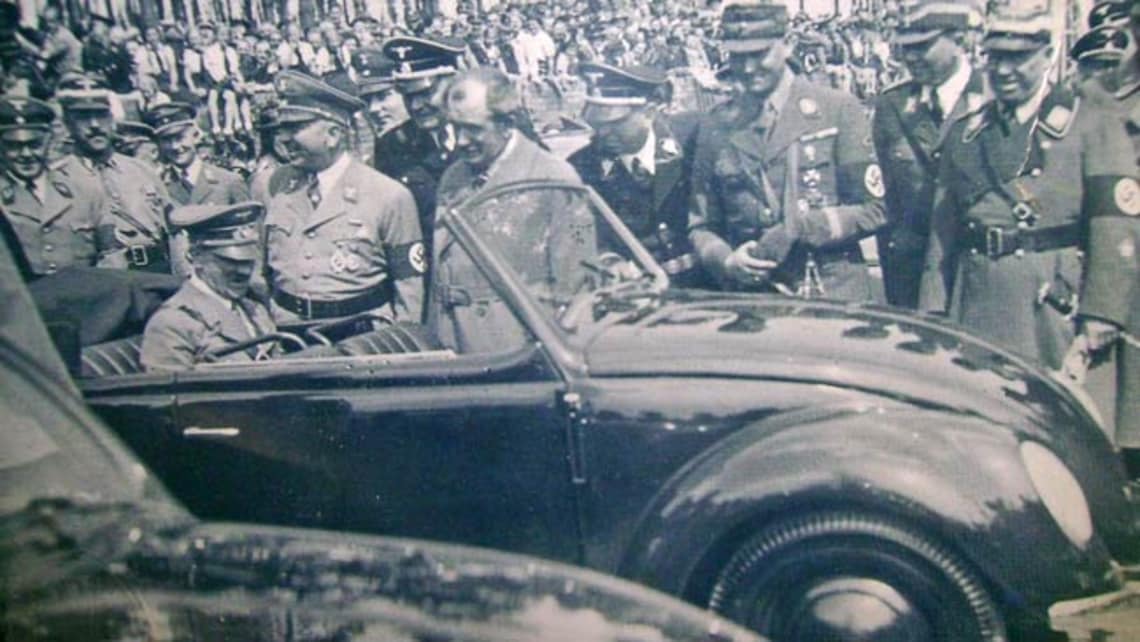
The Origins of the Volkswagen Beetle
The Volkswagen Beetle is one of the most iconic cars in history. It was first introduced in the 1930s and quickly became popular due to its unique design and affordable price. However, what many people don't know is that the Beetle was actually designed by Adolf Hitler himself.
Hitler had a vision of creating a car that could be mass-produced and sold at an affordable price. He wanted a car that every German citizen could afford to buy, and that would help to boost the country's economy. To achieve this, he turned to Ferdinand Porsche, a renowned car designer.
The Design Process
Hitler gave Porsche strict guidelines for the design of the car. It had to be easy to manufacture, fuel-efficient, and able to carry a family of four. Porsche came up with a design that was both simple and elegant, with a rounded shape that was aerodynamic and visually appealing.
The car was named the Volkswagen, which means "people's car" in German. It was a fitting name, as the car was designed to be affordable and accessible to everyone. The first prototype was unveiled in 1936, and it was an instant success.
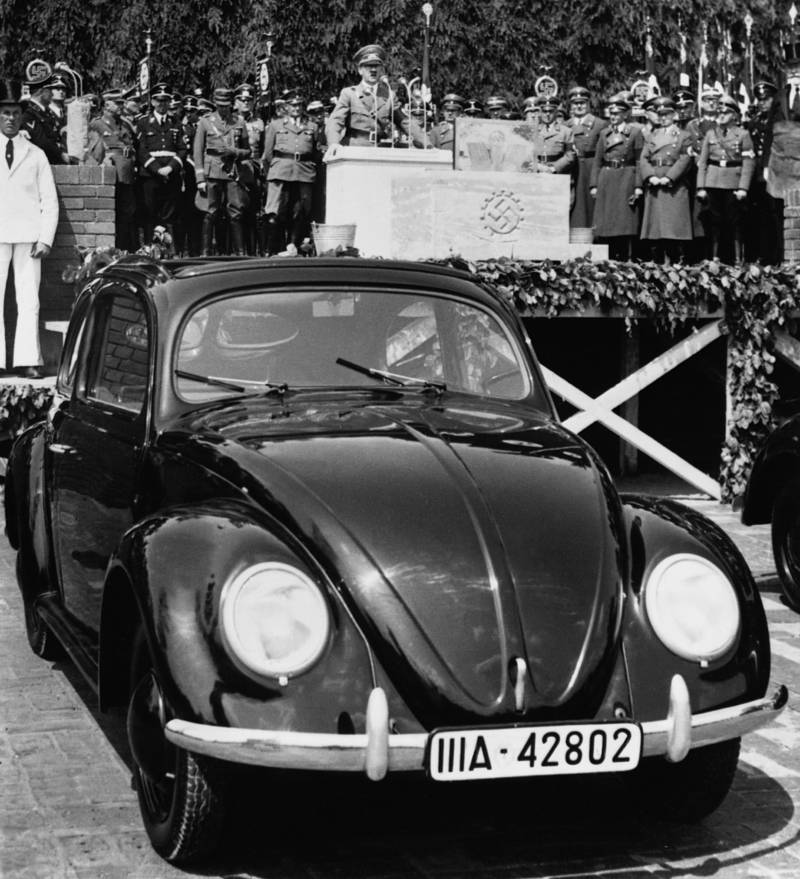
The Production Process
In 1938, a factory was built to mass-produce the Volkswagen. However, the outbreak of World War II delayed production, and the factory was converted to produce military vehicles instead. It wasn't until after the war that production of the Volkswagen resumed.
The Volkswagen Beetle became a symbol of Germany's post-war recovery. It was exported all over the world and became one of the most popular cars of all time. By the mid-1970s, more than 15 million Beetles had been sold.

The Legacy of the Volkswagen Beetle
Today, the Volkswagen Beetle is no longer in production. However, it remains a beloved icon of automotive history. Its unique design and affordable price made it accessible to millions of people, and its legacy continues to inspire car enthusiasts around the world.
Despite its association with Hitler, the Volkswagen Beetle is a testament to the power of design and innovation. It is a reminder that even in the darkest of times, creativity and ingenuity can shine through.

Meta Description
Learn about the surprising origins of the Volkswagen Beetle, designed by none other than Adolf Hitler himself. Discover how this iconic car became a symbol of Germany's post-war recovery and a beloved icon of automotive history.
Meta Keywords
Hitler, Volkswagen, Beetle, car design, Ferdinand Porsche, mass production, affordable price, fuel-efficient, World War II, automotive history
Related video of Hitler Designed The Beetle

Toilet paper is an essential item in every household, but have you ever wondered about its history and how it came to be? The use of toilet paper dates back to ancient China, where paper was invented in the 2nd century BCE. However, it wasn't until the 6th century CE that toilet paper was first used in China.

The First Toilet Paper
The first toilet paper was made from soft, pliable materials such as rice straw, bamboo, and hemp. It was only available to the Chinese emperors and their families, as it was considered a luxury item.
Toilet Paper in Medieval Europe
The use of toilet paper spread to medieval Europe in the 14th century. However, it was not the soft, pliable paper that we know today. It was rough and made from materials such as wool, lace, and hemp. It was only available to the wealthy and was considered a luxury item.

Toilet Paper in America
Toilet paper was first introduced in the United States in the mid-19th century. However, it was not widely used until the early 20th century. Before toilet paper, Americans used a variety of materials, including leaves, corn cobs, and even old newspapers.

The First Commercial Toilet Paper
The first commercial toilet paper was produced by the Scott Paper Company in 1879. It was sold as individual sheets and was marketed as a more sanitary alternative to the traditional methods of cleaning oneself after using the bathroom.

Toilet Paper During World War II
During World War II, toilet paper became rationed in many countries, including the United States. Americans were encouraged to use less toilet paper and to conserve it for the war effort.

Toilet Paper Today
Today, toilet paper is a common household item that is widely available and affordable. It is made from soft, pliable materials such as wood pulp, and is often scented or infused with lotion for added comfort.

The Environmental Impact of Toilet Paper
While toilet paper is a necessary item, it also has a significant environmental impact. The production of toilet paper requires the use of trees and other natural resources, and the disposal of used toilet paper can contribute to pollution and deforestation.
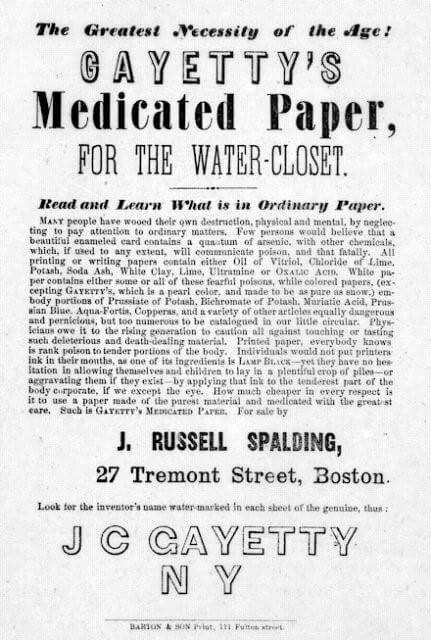
Alternatives to Toilet Paper
There are many alternatives to traditional toilet paper that are more environmentally friendly, including bidets, reusable cloths, and even the "family cloth," which is a cloth that is washed and reused instead of being thrown away.
In Conclusion
Toilet paper has a long and fascinating history, from its origins in ancient China to its widespread use in households around the world today. While it is a necessary item, it is important to consider the environmental impact of its production and disposal, and to explore alternative options that are more sustainable.
Related video of History of Toilet Paper

Humor and laughter have been a part of human culture since ancient times. The first recorded joke dates back to 1900 BC in Sumeria. It was a fart joke, which goes to show that some things never go out of style. Jokes have evolved over time, but their purpose remains the same - to make people laugh and forget their troubles, even if it's just for a moment.
The Middle Ages

During the Middle Ages, jesters and troubadours entertained royalty and peasants alike with their jokes and songs. They often relied on physical humor, such as pratfalls and exaggerated movements, to get a laugh. Some of the humor was crude by today's standards, but it was a way for people to escape the hardships of their daily lives.
The Renaissance

The Renaissance brought about a more sophisticated form of humor. Satire and parody were popular, poking fun at society and its leaders. William Shakespeare is known for his witty wordplay and puns, which are still appreciated today. The printing press allowed jokes to reach a wider audience, and joke books became popular.
The 18th and 19th Centuries
:max_bytes(150000):strip_icc()/funny-history-memes-5c49e57e46e0fb00016a4bd3.jpg)
The 18th and 19th centuries saw the rise of the stand-up comedian. Comedians such as Charlie Chaplin and Buster Keaton used physical comedy to great effect. Vaudeville shows were popular, featuring a variety of performers including magicians, singers, and comedians. Mark Twain and Oscar Wilde were known for their humorous writings, and the first comic strips appeared in newspapers.
The 20th Century

The 20th century saw the rise of radio and television, bringing comedy into people's homes. The Marx Brothers, Laurel and Hardy, and Abbott and Costello were popular comedic duos. Lucille Ball and Carol Burnett were pioneering female comedians, and Johnny Carson hosted The Tonight Show for 30 years. The 1980s saw the rise of stand-up comedians such as Eddie Murphy, Robin Williams, and Jerry Seinfeld.
Modern Day

Today, jokes are everywhere, from social media to late-night talk shows. Comedians like Ellen DeGeneres, Dave Chappelle, and Trevor Noah have huge followings. Memes and viral videos provide instant humor, and podcasts allow comedians to reach a global audience. The internet has also brought about a new form of humor - trolling and satire. While not always in good taste, it shows that humor is still an important part of our lives.
The Psychology of Jokes

Why do we find jokes funny? It's not just because they make us laugh. Laughter has been shown to have physical and emotional benefits, reducing stress and improving mood. Jokes also allow us to connect with others, sharing a moment of laughter and breaking down barriers. The unexpected twist or the play on words in a joke can also stimulate our brains, making us feel clever and satisfied.
The Future of Jokes

As long as there are people, there will be jokes. As technology continues to advance, we may see new forms of humor emerge. Virtual reality could allow us to experience jokes in a whole new way, while artificial intelligence may create new types of comedy. Whatever the future holds, one thing is certain - we will always need a good laugh.
Related video of History Of The Joke
/cdn.vox-cdn.com/uploads/chorus_image/image/50821489/spam-wall.0.0.jpg)
Spam is a popular canned meat that has been around for decades. It is a mixture of chopped pork and ham, salt, water, sugar, and sodium nitrate. The meat is then processed and canned to create a long-lasting product that can be easily stored and transported. The history of Spam meat is an interesting one that spans over 80 years.
World War II

Spam meat became a popular food item during World War II when it was used to feed soldiers. The meat was easy to transport and could be eaten cold or heated up. It was also cheap to produce, which made it a popular choice for the military.
During the war, Spam became a staple in many countries, including the United Kingdom, where it was used to feed civilians during the food shortage. It was also used to barter for other items because of its high demand.
Post-World War II
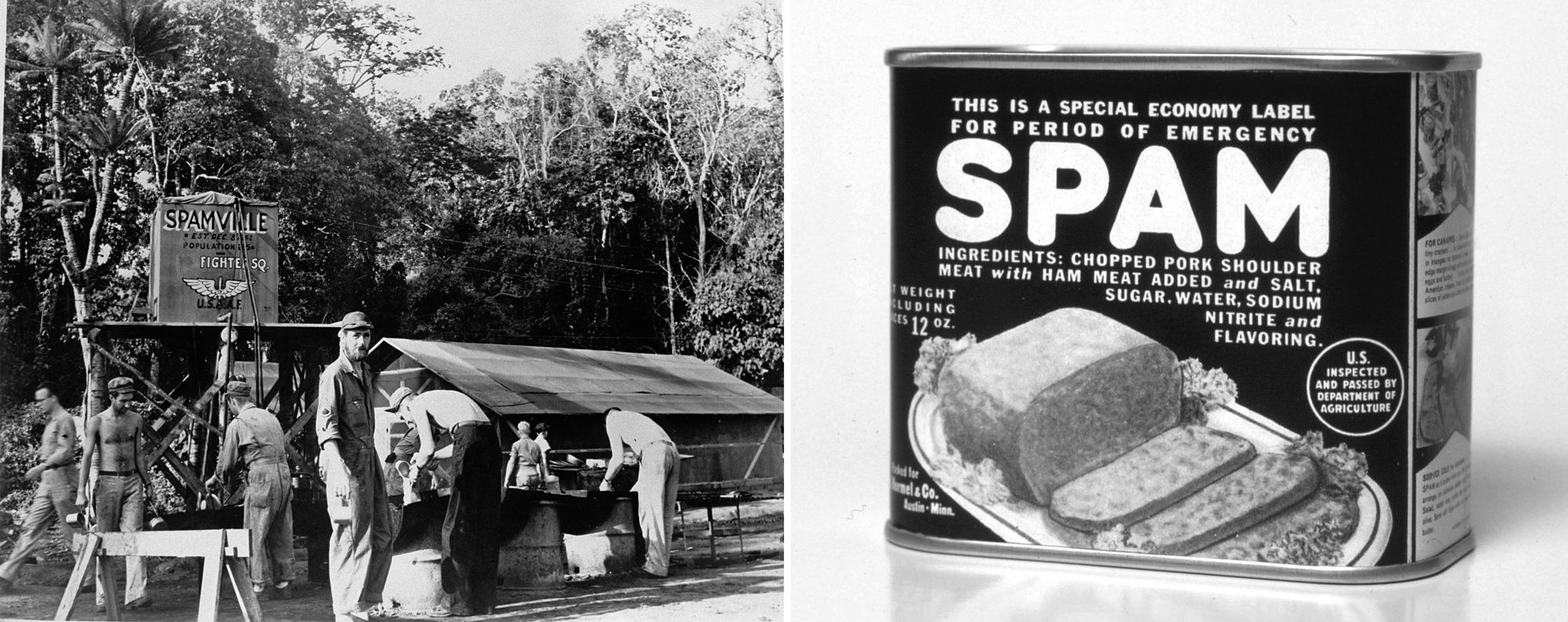
After the war, Spam meat continued to be popular because of its convenience and affordability. It was a quick and easy meal that could be prepared in a variety of ways. People started to get creative with their Spam recipes, including frying it and adding it to sandwiches.
In the 1960s, Hormel, the company that produces Spam, began marketing the product to a wider audience. They created catchy jingles and slogans that helped to increase its popularity. Spam became a household name and was used in many different recipes, including casseroles and stir-fries.
Spam Around the World

Spam meat has become popular around the world, especially in countries like the Philippines, where it is a common ingredient in many dishes. In Hawaii, Spam is so popular that it has its own festival called "Spam Jam," which celebrates all things Spam.
Despite its popularity, Spam meat has been criticized for its high sodium and fat content. Some people also find the taste and texture unappealing. However, it remains a popular food item that has stood the test of time.
Conclusion
The history of Spam meat is a fascinating one that spans over 80 years. It has been used to feed soldiers, civilians, and has become a household name around the world. Whether you love it or hate it, there is no denying that Spam meat has made a significant impact on the food industry.
Related video of History of Spam Meat
Nike is one of the most popular sports brands in the world. It was founded in 1964 by Bill Bowerman and Phil Knight. Nike has become a household name and is known for its high-quality shoes, athletic apparel, and accessories. The company has a rich history that has contributed to its success today.
The Early Days

Nike was originally called Blue Ribbon Sports and was started by Bill Bowerman, a track and field coach, and Phil Knight, a middle-distance runner. In the early days, the company was a distributor for the Japanese shoemaker Onitsuka Tiger, which is now known as ASICS.
In 1971, the company changed its name to Nike, which was inspired by the Greek goddess of victory. The company’s first logo was the “Swoosh,” which was designed by a graphic design student named Carolyn Davidson.
The Air Jordan Era
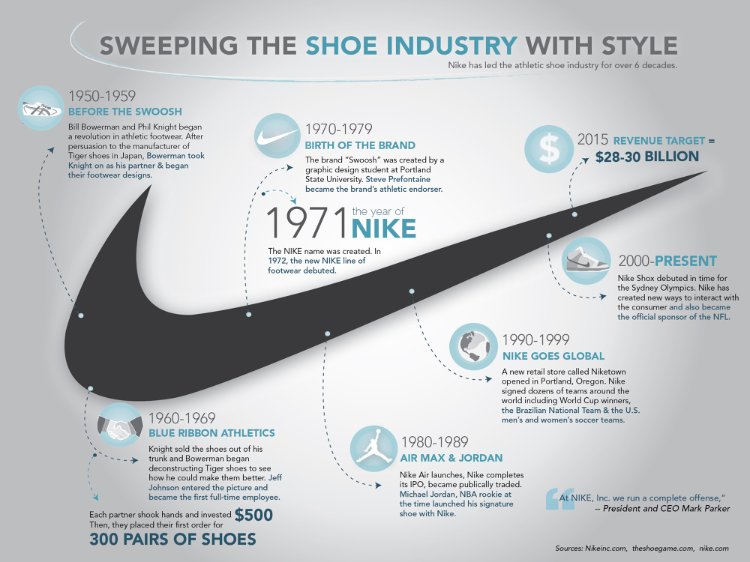
In 1984, Nike signed a deal with basketball legend Michael Jordan to create a line of shoes called Air Jordans. The shoes became an instant hit and helped transform the basketball shoe industry. The Air Jordans were not only stylish but also provided the support and comfort that basketball players needed on the court.
The Air Jordan line has continued to be popular even after Michael Jordan retired from basketball. The shoes are now considered collector's items and are sought after by sneaker enthusiasts.
Innovations in Shoe Technology
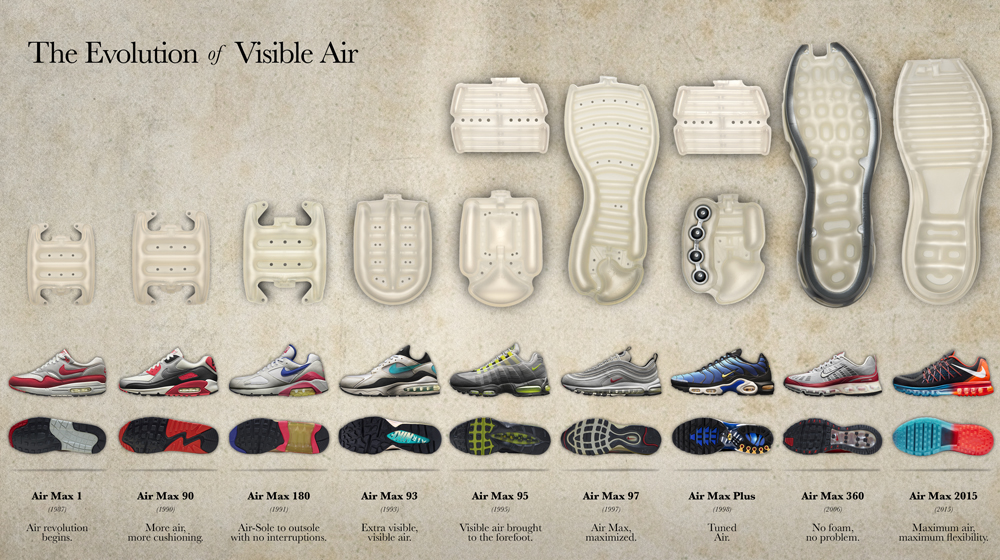
Nike has always been at the forefront of shoe technology. In 1979, Nike introduced the Air Cushioning system, which provided superior cushioning and support for athletes. The Air Max line of shoes, which was introduced in 1987, featured a visible air pocket in the sole of the shoe.
In recent years, Nike has introduced several new technologies, including Flyknit, which is a lightweight and breathable material that is used in the upper part of the shoe. Nike has also introduced the Nike+ system, which allows athletes to track their workouts and monitor their progress using a smartphone app.
Nike Today

Today, Nike is one of the most recognizable brands in the world. The company’s products are sold in more than 190 countries, and Nike has a presence in almost every sport. Nike has also expanded beyond athletic wear and now offers a variety of products, including casual wear and accessories.
Nike continues to innovate and create new products. The company has a strong commitment to sustainability and has introduced several initiatives to reduce its environmental impact. Nike’s commitment to innovation and sustainability ensures that the company will continue to be successful for many years to come.
Conclusion
The history of Nike shoes is a fascinating one. From its humble beginnings as a distributor for Onitsuka Tiger to its current status as a global powerhouse, Nike has come a long way. Nike’s commitment to innovation and sustainability ensures that the company will continue to be successful for many years to come.
Related video of History of Nike Shoes

The gesture of giving the finger, also known as flipping the bird or giving the middle finger, is a common form of expression around the world. It is often used to express anger, frustration, or disrespect towards someone. However, the origins of this gesture are not clear, and different cultures have different interpretations of the gesture.
The Origins of the Gesture
There are many theories about the origins of the finger gesture, but none of them are definitive. One theory is that it dates back to ancient Greece, where the gesture was used to insult enemies during battles. Another theory is that it was used by Roman gladiators to taunt their opponents.
Some believe that the gesture has a sexual connotation, as it resembles a phallic symbol. Others think that the gesture originated in medieval times, when archers would show their middle finger to their enemies to show that they still had their bow hand intact.
The Gesture Around the World
The finger gesture is not only common in Western cultures but also in other parts of the world. However, the meaning of the gesture can vary depending on the culture. In some countries, such as Japan, the gesture is not considered offensive and is used to express apology or gratitude.
In the Middle East, the gesture is considered highly offensive, and it is often accompanied by other gestures or insults. In some African cultures, the gesture is used to ward off evil spirits or to curse someone. In India, the gesture is not commonly used, but it is known as the "black spot" and is considered highly insulting.
The Finger Gesture in Pop Culture
The finger gesture has become a popular form of expression in pop culture, and it is often used in movies, TV shows, and music videos. It has also been used by celebrities and politicians to express their opinions or to make a statement.
One of the most famous examples of the finger gesture in pop culture is the song "The Middle Finger" by Bo Burnham. The song is a satirical take on the gesture and its meaning in modern society. The music video features Burnham giving the finger to various people and objects.
The Finger Gesture in Politics

The finger gesture has also been used in politics as a form of protest or a way to express dissent. In 1968, during the Mexico City Olympics, two American athletes, Tommie Smith and John Carlos, raised their middle fingers during the national anthem to protest racial discrimination in the United States.
In recent years, politicians have also used the finger gesture as a way to express their opinions or to show their dissatisfaction with their opponents. In 2017, during a debate in the South Korean parliament, a politician gave the finger to his opponents, causing a public outcry.
The Consequences of the Finger Gesture

The finger gesture can have serious consequences, depending on the context in which it is used. In some cases, it can lead to legal action, such as assault or disorderly conduct charges. In other cases, it can lead to social ostracism or a loss of employment.
However, the finger gesture is also protected under free speech laws in many countries, and it is often used as a form of political protest or satire. In these cases, the gesture is seen as a legitimate form of expression and is not subject to legal action.
The Future of the Finger Gesture

The finger gesture is likely to remain a popular form of expression in the future, as it is deeply ingrained in many cultures around the world. However, the meaning of the gesture may change over time, depending on the social and political context in which it is used.
As society becomes more diverse and globalized, it is important to understand the different interpretations of the finger gesture in different cultures. This will help avoid misunderstandings and promote greater understanding and tolerance.
Related video of History Of Giving The Finger
Dogs are one of the most loyal and loving animals on the planet. They have been our companions for thousands of years, and as such, we have a responsibility to take care of them. One of the most important aspects of that care is their diet. In this article, we will explore the history of dog food, from its origins to the present day.
The Origins of Dog Food

The history of dog food can be traced back to the early days of domestication. Dogs were primarily used for hunting and guarding, and their diet consisted mainly of scraps from the human table. However, as dogs became more domesticated, their diet began to change.
In the mid-1800s, a man named James Spratt introduced the first commercial dog food. Spratt was a lightning rod salesman who noticed that dogs in the port towns of England were eating scraps of discarded biscuits. He created a biscuit made of wheat, beetroot, vegetables, and beef blood, which he sold as the first dog food.
Evolution of Dog Food
After Spratt's introduction of commercial dog food, the industry began to evolve rapidly. In the early 1900s, canned dog food was introduced, and by the 1950s, dry kibble had become the standard.
During the 1960s and 1970s, dog food manufacturers began to focus more on the nutritional needs of dogs. This led to the creation of specialized diets for different breeds, sizes, and ages of dogs.
Recent Developments in Dog Food

In recent years, the dog food industry has continued to evolve. More and more manufacturers are focusing on natural and organic ingredients, and there has been a growing trend towards raw food diets.
There has also been a growing awareness of the importance of proper nutrition for dogs. As a result, many dog owners are now supplementing their dog's diet with vitamins and minerals, and there has been a growing trend towards homemade dog food.
The Future of Dog Food

The future of dog food looks promising. As we continue to learn more about the nutritional needs of dogs, we can expect to see even more specialized diets and products on the market.
It is also likely that there will be an increased focus on sustainability and ethical sourcing of ingredients. As consumers become more conscious of the impact of their purchases on the environment and animal welfare, the dog food industry will need to adapt to meet these demands.
Conclusion
The history of dog food is a fascinating one, and it is clear that we have come a long way from the days of feeding our dogs scraps from the table. Today, there are a wide variety of options available to dog owners, from traditional kibble to raw food diets.
As we continue to learn more about the nutritional needs of dogs, we can expect to see even more specialized diets and products on the market. Whatever the future holds, one thing is certain: we will always have a responsibility to provide our furry friends with the best possible nutrition.
Related video of History of Dog Food
The Caucasian race is a term used to describe people originating from Europe, the Middle East, and parts of Asia. The term "Caucasian" was first used in the late 18th century by German philosopher Johann Blumenbach, who believed that the people of the Caucasus region of Eurasia were the most beautiful and civilized in the world.

The Origins of the Caucasian Race
The origins of the Caucasian race are shrouded in mystery. Some scientists believe that the Caucasian race originated in the Caucasus Mountains, while others believe that it originated in the Middle East.

Regardless of its origins, the Caucasian race has had a significant impact on world history. From the ancient Greeks and Romans to the modern Europeans and Americans, the Caucasian race has left an indelible mark on human civilization.
The Ancient Greeks and Romans
The ancient Greeks and Romans are perhaps the most famous members of the Caucasian race. The Greeks are known for their contributions to philosophy, mathematics, and literature, while the Romans are known for their engineering, law, and military prowess.

The legacy of the ancient Greeks and Romans can still be seen today in our political systems, our legal systems, and our cultural traditions.
The Middle Ages
The Middle Ages saw the rise of the Christian Church and the spread of Christianity throughout Europe. The Caucasian race played a significant role in this process, with European missionaries traveling to other parts of the world to spread the message of Christianity.
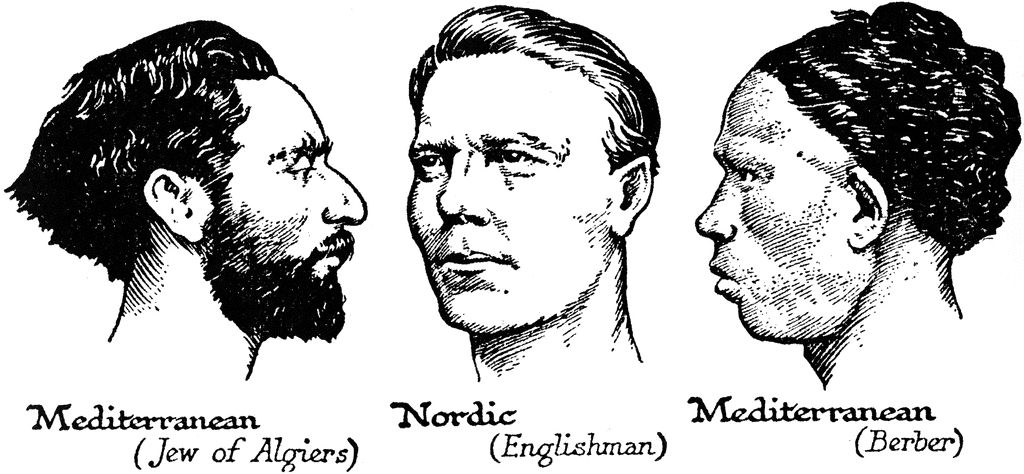
The Middle Ages also saw the rise of the Islamic Empire, which had a significant impact on the development of art, science, and literature.
The Renaissance
The Renaissance was a period of great cultural and artistic achievement in Europe. The Caucasian race played a significant role in this period, with artists such as Leonardo da Vinci, Michelangelo, and Raphael creating some of the most iconic works of art in human history.
The Renaissance also saw the rise of humanism, which placed a greater emphasis on human reason and individualism.
The Age of Exploration
The Age of Exploration saw European explorers traveling to other parts of the world in search of new trade routes and territories. The Caucasian race played a significant role in this process, with explorers such as Christopher Columbus and Vasco da Gama traveling to the Americas and Asia.

The Age of Exploration also saw the colonization of many parts of the world by European powers. This colonization had a lasting impact on the cultures and societies of these regions.
The Industrial Revolution
The Industrial Revolution saw the rise of industry and technology in Europe and North America. The Caucasian race played a significant role in this period, with inventors such as Thomas Edison and Alexander Graham Bell creating some of the most important technological advancements in human history.
The Industrial Revolution also saw the rise of capitalism and the modern economic system.
World War I and II
World War I and II were two of the most devastating conflicts in human history. The Caucasian race played a significant role in both conflicts, with European powers playing a major role in the causes of the wars and the fighting itself.
The aftermath of World War II saw the rise of the United States as a world superpower, with the Caucasian race playing a significant role in the country's economic and political systems.
Conclusion
The history of the Caucasian race is a long and complex one, with many ups and downs. Despite this, the Caucasian race has had a significant impact on human civilization, with its contributions to art, science, and culture shaping the world we live in today.